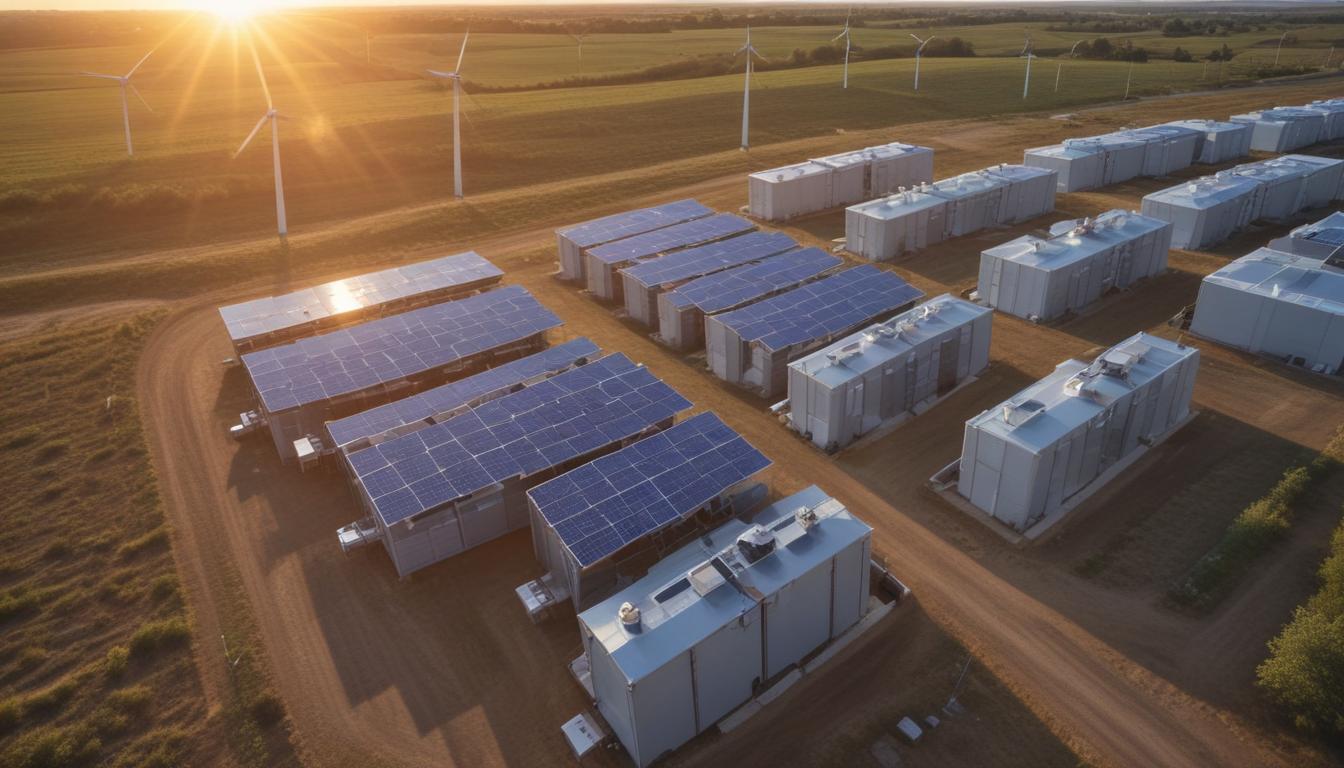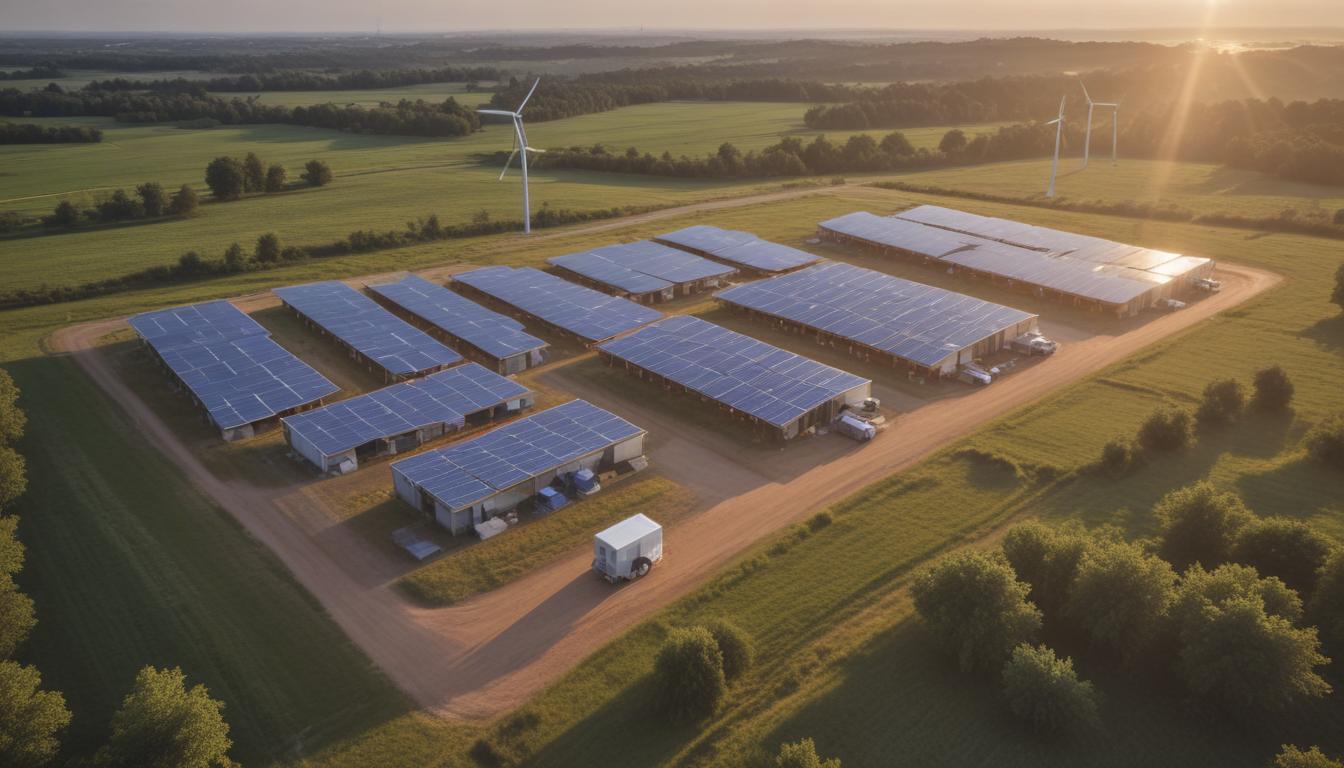Now Reading: Powering Tomorrow Batteries & Beyond
- 01
Powering Tomorrow Batteries & Beyond
Powering Tomorrow Batteries & Beyond

Energy Storage Technologies Batteries and Beyond
Have you ever wondered what happens to the clean energy from solar panels when the sun goes down, or from wind turbines when the air is still? The dream of a world powered by 100% renewable energy often bumps up against this one major hurdle intermittency. This reliability gap can feel like a critical flaw in our transition to a greener future, leaving many to question if a sustainable grid can ever be as dependable as the fossil fuel systems we are trying to replace. The anxiety is real, but so is the solution.
The answer lies in a powerful and rapidly evolving field energy storage. Think of it as a giant, rechargeable piggy bank for the electric grid. These technologies capture excess energy when it’s plentiful and release it precisely when we need it most, ensuring a smooth, uninterrupted flow of power 24/7. They are the missing link that transforms renewable energy from a variable source into a firm, on-demand resource. This article will demystify the essential energy storage technologies of today and tomorrow, from the batteries in our pockets to groundbreaking systems that can power entire cities.
Why Energy Storage is a Game Changer for Our Future
Energy storage is far more than just a backup plan; it is the fundamental technology that underpins a modern, resilient, and clean electric grid. Our traditional power grid was built for a world of centralized, dispatchable power plants—like coal or natural gas—that could be turned on and off to meet demand. Renewable energy sources like wind and solar operate on nature’s schedule, not ours. Energy storage steps in to absorb this variability, creating a stable and predictable power supply that can handle sudden spikes in demand or dips in generation. This ability to balance the grid in real-time prevents blackouts and ensures that our lights, businesses, and essential services always stay on.
Beyond grid stability, the economic and environmental benefits are immense. During times of low demand and sunny or windy conditions, energy can be stored cheaply instead of being wasted. This stored energy can then be sold back to the grid during peak hours when electricity is most expensive, lowering overall costs for consumers. This practice also displaces the need for “peaker plants,” which are often the most polluting and inefficient fossil fuel generators, fired up only to meet high demand. By unlocking the full potential of our renewable investments and reducing our reliance on fossil fuels, energy storage actively accelerates our journey to a carbon-free economy.

The Reigning Champion Lithium Ion Batteries
When most people think of energy storage, they picture a lithium-ion battery. This technology has become dominant for a reason, powering everything from our smartphones and laptops to electric vehicles and massive, grid-scale storage facilities. The success of lithium-ion batteries comes down to their impressive energy density, meaning they can pack a lot of power into a relatively small and lightweight package. They are also highly efficient, able to charge and discharge thousands of times with minimal energy loss, making them ideal for managing the daily cycles of solar power generation or stabilizing grid frequency.
However, the reign of lithium-ion is not without its challenges. The technology relies heavily on raw materials like lithium, cobalt, and nickel, the mining of which can have significant environmental and social impacts. The concentration of these resources in a few specific countries also creates supply chain vulnerabilities and price volatility. Furthermore, while their lifespan is long, it is not infinite, and developing safe, cost-effective methods for recycling billions of batteries remains a major industrial hurdle. These limitations are a powerful driver behind the global search for alternative, more sustainable, and abundant storage solutions.
Exploring the Beyond Promising Alternatives to Batteries
While lithium-ion is the current leader, the future of energy storage will be a diverse ecosystem of different technologies, each suited to a specific need. The “beyond” category is filled with ingenious solutions that are either already proven or show incredible promise for overcoming the limitations of traditional batteries, especially for long-duration storage.
Pumped Hydro Storage The Original Powerhouse
Long before lithium-ion batteries were a commercial reality, we were storing massive amounts of energy using a brilliantly simple concept water and gravity. Pumped hydro storage is the original grid-scale battery and still accounts for the vast majority of the world’s energy storage capacity. The system works by using two water reservoirs located at different elevations. When electricity is cheap and abundant, it is used to pump water from the lower reservoir to the upper one. When power is needed, the water is released, flowing back down through turbines to generate electricity.
The primary advantages of pumped hydro are its immense scale and incredibly long lifespan, with facilities capable of operating for 50 years or more with very low operating costs. It is a proven, reliable, and highly efficient technology. The major drawback, however, is its geographical dependency. It requires specific topography with significant elevation changes and access to water, making it unsuitable for many locations. The construction of large dams and reservoirs can also have a substantial impact on local ecosystems and land use, creating challenges for new project development.
Green Hydrogen The Versatile Energy Carrier
One of the most exciting frontiers in energy storage is green hydrogen. This technology uses renewable electricity to power an electrolyzer, which splits water molecules (H2O) into hydrogen and oxygen. This clean hydrogen gas can then be stored in large quantities in tanks or underground caverns for days, weeks, or even entire seasons. When electricity is needed, the hydrogen can be used in a fuel cell or burned in a turbine to generate power with only water as a byproduct. This makes it an ideal candidate for long-duration energy storage, solving the problem of how to power a country through a long, dark, and windless winter.
The incredible versatility of hydrogen is its key selling point. It is not just a way to store electricity; it is an energy carrier that can decarbonize other hard-to-abate sectors, such as heavy industry, shipping, and transportation. The challenges, however, are significant. The process of creating hydrogen and then converting it back to electricity involves energy losses, making it less efficient than batteries for short-term storage. Furthermore, producing green hydrogen is currently expensive, and the infrastructure for storing and transporting it safely and efficiently is still in its early stages of development. Despite these hurdles, its potential to provide seasonal storage makes it a critical area of global research and investment.


































